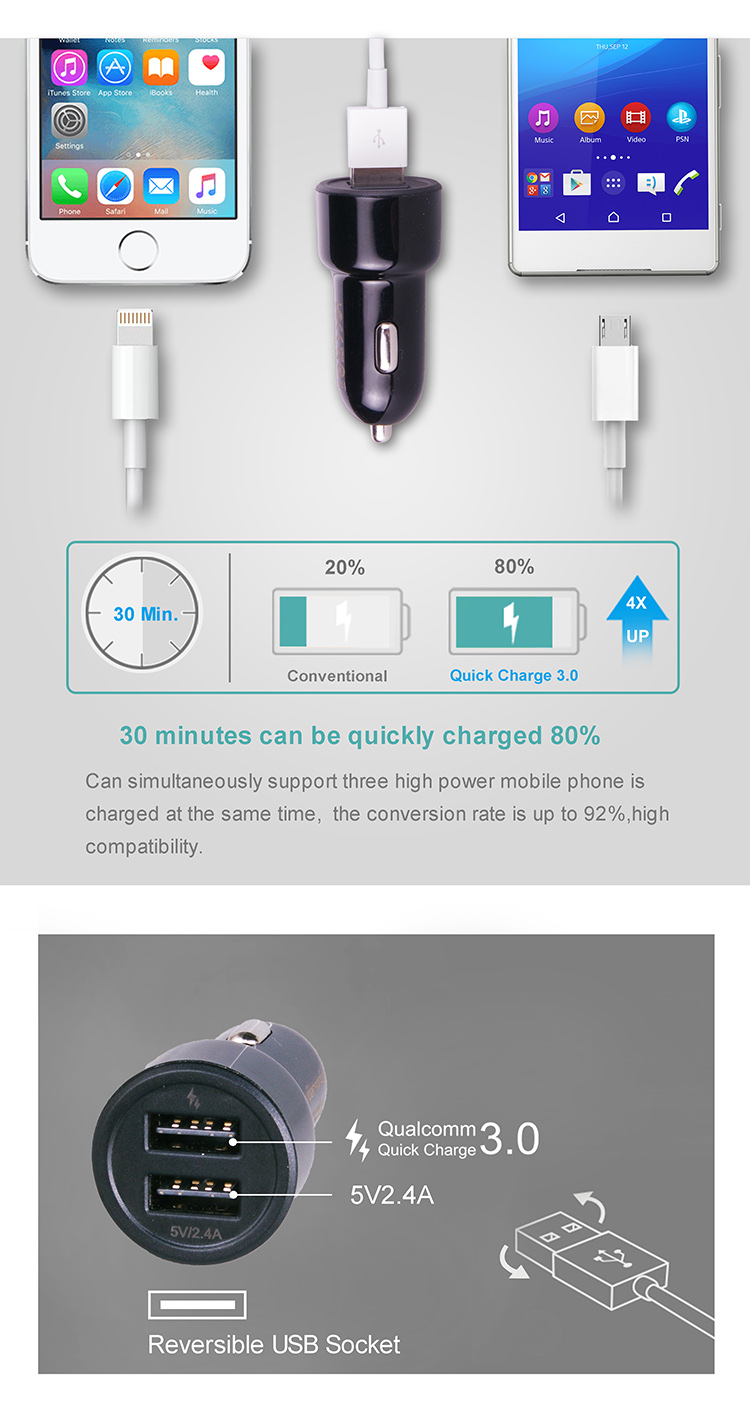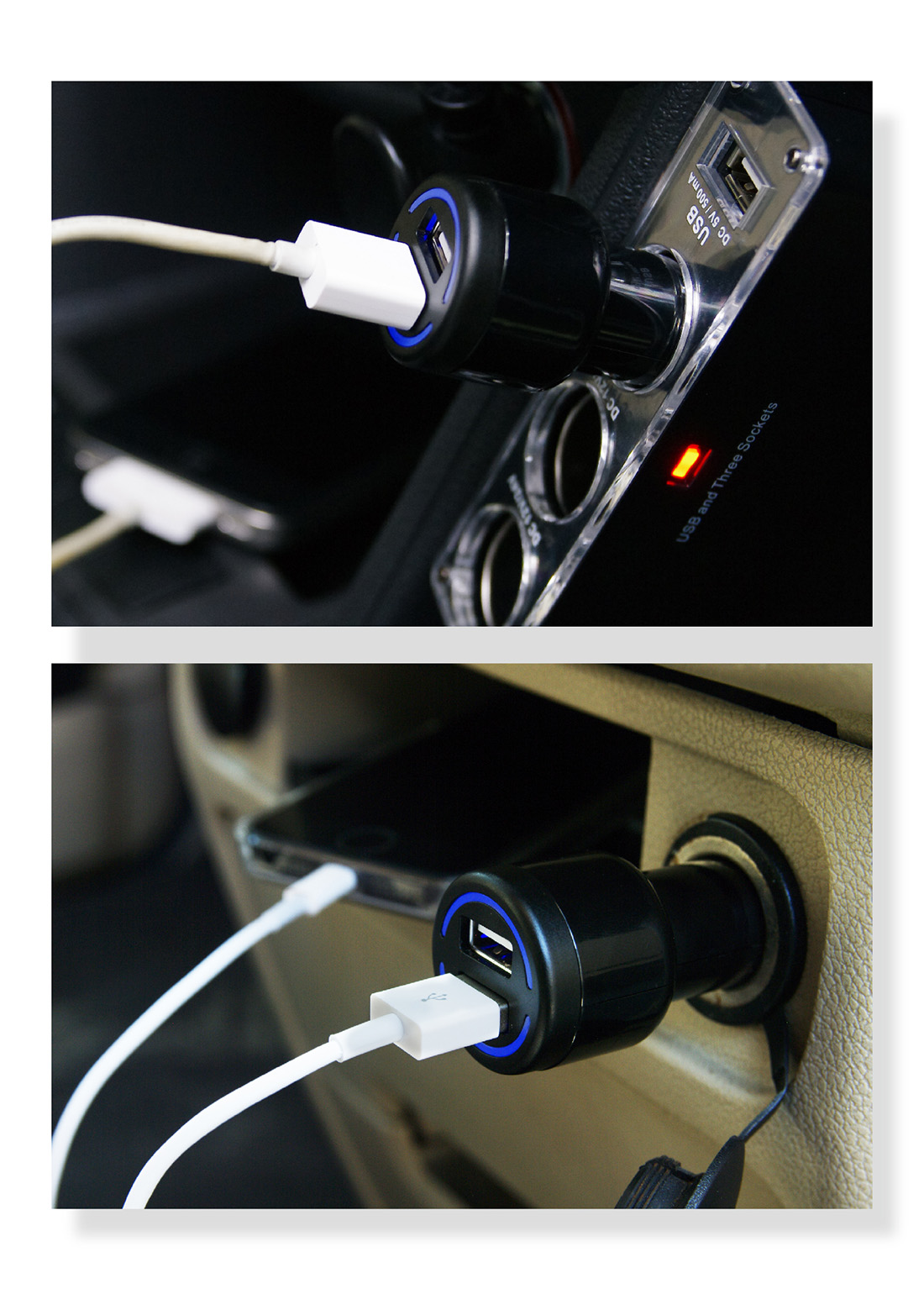Blog




The automotive industry is in the midst of a significant transformation, driven by rapid technological advancements and a growing emphasis on enhancing the driving experience through innovative car accessories. While convenience has always been a core focus, the future of car accessories is increasingly about integrating solutions that elevate vehicle safety and align with the latest technological trends. Among these trends, the ubiquity of 3C products—computers, communications, and consumer electronics—has led to a growing demand for car accessories that cater to these devices. The critical question for today’s drivers is no longer just whether a car has a charger for 3C products, but how the quality and accessibility of these chargers can influence the overall driving experience.
In today’s digital age, smartphones, tablets, and other electronic devices have become essential components of daily life. These devices are not just tools for communication and entertainment; they are integral to how we navigate and interact with the world. This reliance on 3C products extends to our time spent in vehicles. Whether it’s using a smartphone for GPS navigation, streaming music through a tablet, or keeping a laptop charged for work on the go, drivers and passengers alike depend on their devices while traveling.
As a result, the availability and quality of car chargers have become critical factors in determining whether a driving experience is smooth and stress-free. Imagine being on a long road trip, relying on your smartphone for directions, only to have the battery die with no available charging port. This scenario highlights the importance of integrating 3C-compatible accessories into vehicles, particularly car chargers that are reliable, fast, and conveniently located.
When it comes to car chargers, not all products are created equal. The quality of a charger can significantly impact its performance and by extension, the overall driving experience. High-quality chargers ensure that devices charge quickly and efficiently, reducing downtime and keeping drivers connected. On the other hand, low-quality chargers may charge slowly, fail to charge altogether, or even cause damage to devices.
A critical aspect of charger quality is its ability to provide a stable and consistent power output. Fluctuations in power can lead to inconsistent charging, which can be frustrating and potentially harmful to electronic devices. Additionally, high-quality chargers are often equipped with safety features such as overcharge protection, temperature control, and short-circuit prevention, which protect both the device and the vehicle’s electrical system.
Moreover, the durability of the charger is another important factor. Drivers need chargers that can withstand the rigors of daily use, including frequent plugging and unplugging, exposure to heat and cold, and the general wear and tear that comes with life on the road. Investing in a high-quality charger can save drivers from the inconvenience and expense of having to replace faulty chargers frequently.

In addition to quality, the accessibility of 3C chargers is a crucial consideration for modern drivers. It’s not just about having a charger available; it’s about ensuring that the charger is easily accessible and conveniently located within the vehicle. Poorly positioned charging ports can lead to tangled cables, distracted driving, and general frustration for both drivers and passengers.
The ideal car charger setup allows for multiple devices to be charged simultaneously, catering to the needs of all passengers. This is particularly important for families on long trips or business travelers who need to keep multiple devices powered throughout the journey. Chargers that are integrated into the vehicle’s design, such as those built into the dashboard or center console, offer the most convenient access and help to keep the cabin organized and free of clutter.
Furthermore, wireless charging solutions are becoming increasingly popular, offering a convenient and cable-free way to keep devices charged. These solutions are particularly beneficial for drivers who frequently use their smartphones for navigation or communication, as they allow for easy placement and retrieval of the device without the hassle of plugging in a cable.
To stay competitive in the evolving automotive industry, the car accessory sector must closely align its products with contemporary trends in electronic devices. This means developing accessories that not only serve a functional purpose but also seamlessly integrate into the daily lives of consumers. The future of car accessories lies in creating products that are indispensable, much like smartphones have become in recent years.
For car accessory manufacturers, this involves a combination of macro and micro approaches. On a macro level, companies must stay ahead of technological trends, anticipating the needs of tomorrow’s drivers. This includes investing in research and development to create innovative products that enhance safety, convenience, and connectivity.
On a micro level, manufacturers must be adept at analyzing customer and market demands to identify gaps in the market. This requires a deep understanding of how drivers use their vehicles and electronic devices, as well as the challenges they face in maintaining connectivity on the go. By focusing on these details, manufacturers can develop products that not only innovate but also address real-world needs and improve the overall driving experience.

In an age where information is readily available, it’s not enough for companies to simply collect data to design products. Instead, they must use technology to spread knowledge and educate consumers about the benefits and uses of their products. This approach not only helps in building brand loyalty but also establishes a company as a thought leader in the industry.
Customer service is also a critical component of maintaining a leadership position in the vehicle accessory industry. The final user of any product is the customer, and whether in the past or future, adhering to a people-centered approach is essential. This means providing immediate and efficient responses to customer inquiries and issues, tailored to the different needs and situations of each customer.
Quick and effective customer service is not just about resolving problems; it’s about building trust and ensuring that customers feel valued and supported. In the competitive world of automotive accessories, where new products are constantly being introduced, excellent customer service can be the differentiator that keeps a company at the forefront of the industry.
The future of car accessories is more than just making driving convenient; it’s about leveling up vehicle safety and integrating innovative technologies that align with the modern driver’s lifestyle. As 3C products like smartphones become increasingly pervasive, the car accessory industry must evolve to meet these new demands, creating products that are not only functional but also essential.
By focusing on the quality and accessibility of 3C chargers, manufacturers can significantly enhance the driving experience, ensuring that drivers and passengers remain connected and powered on the go. Innovation in car accessories must be driven by a deep understanding of customer needs and market trends. This involves not only designing new products but also imagining what could be possible in the future.
As the industry moves forward, companies that prioritize customer service and maintain a people-centered approach will likely lead the way, setting new standards for what drivers expect from their vehicles. In the end, the future of car accessories is bright, with endless possibilities for innovation and growth. The key to success will be staying ahead of trends, anticipating customer needs, and delivering products that make a tangible difference in the lives of drivers everywhere.

This site uses cookies to improve your browsing experience. we’ll assume you’re OK to continue. If you want to read more about this, please click PRIVACY thank you.